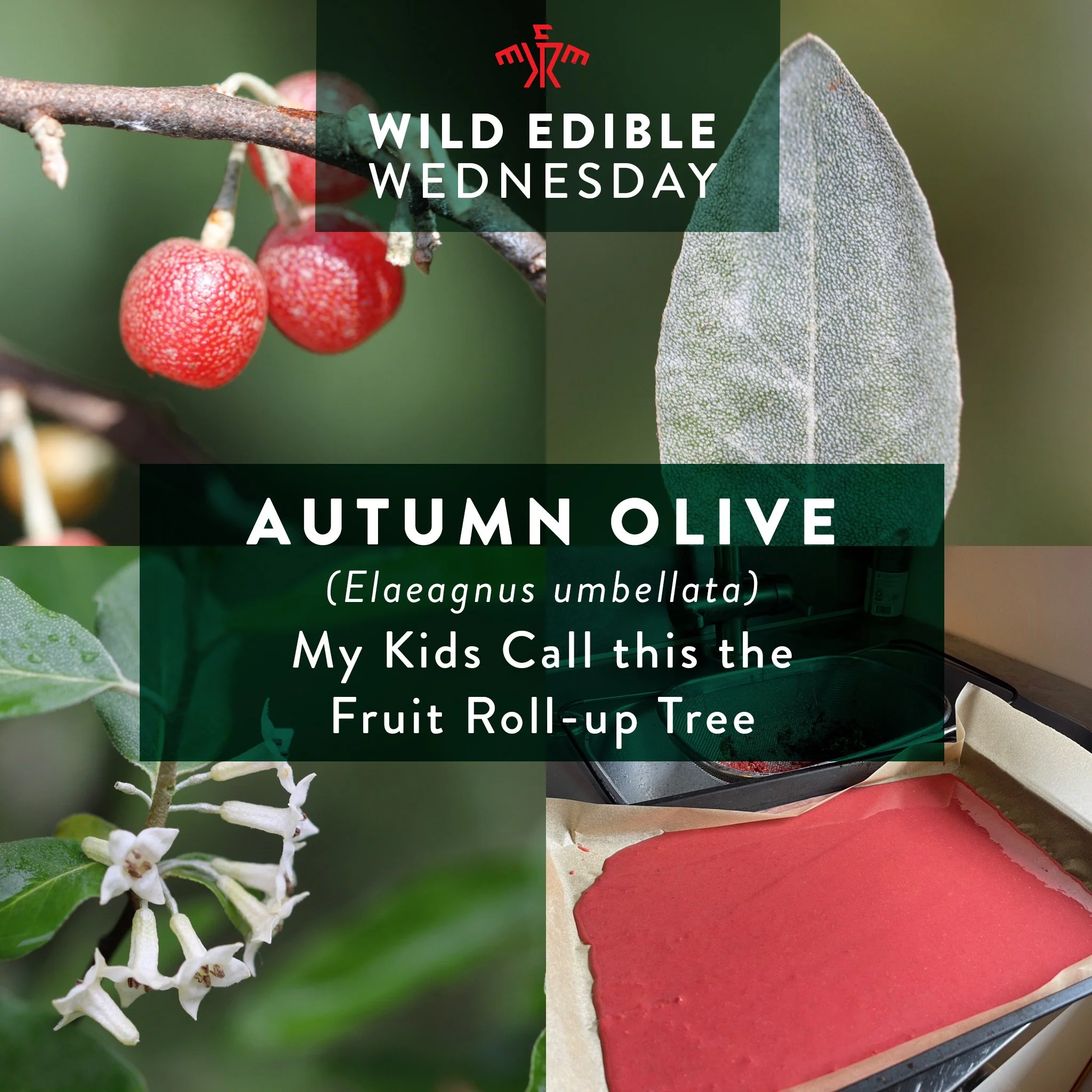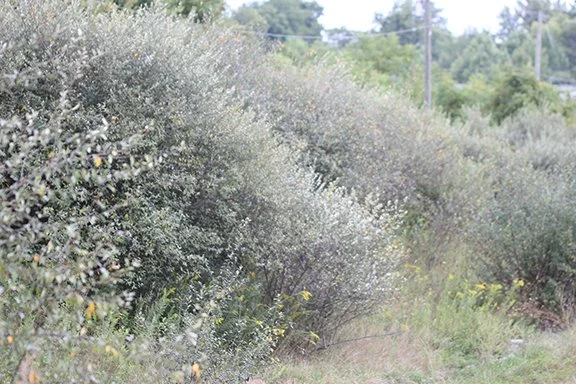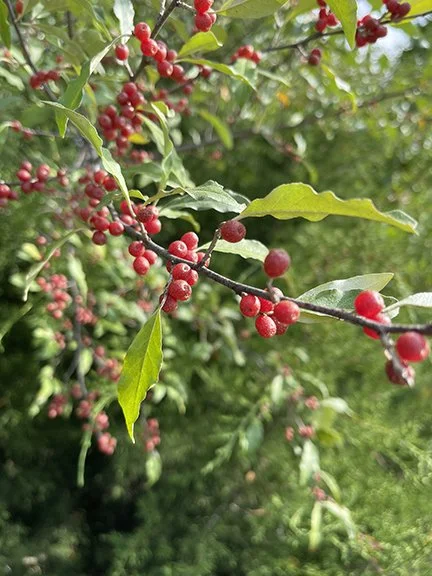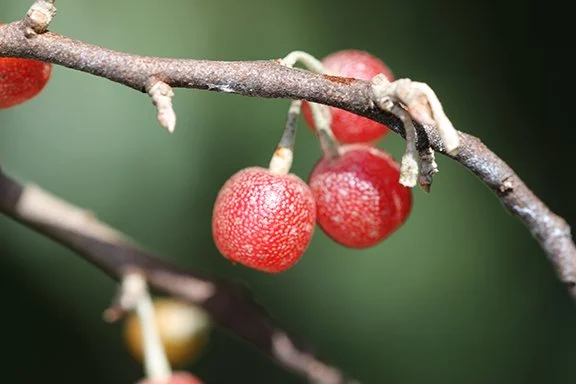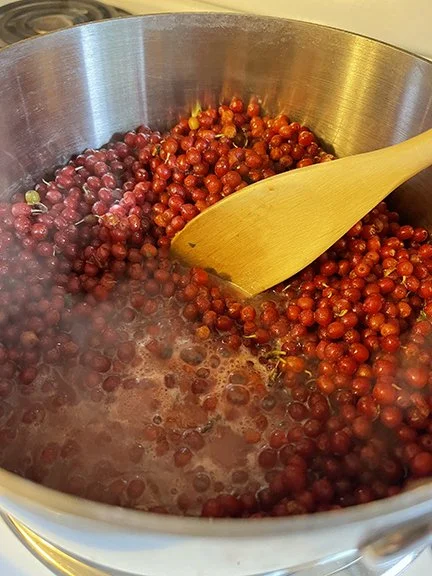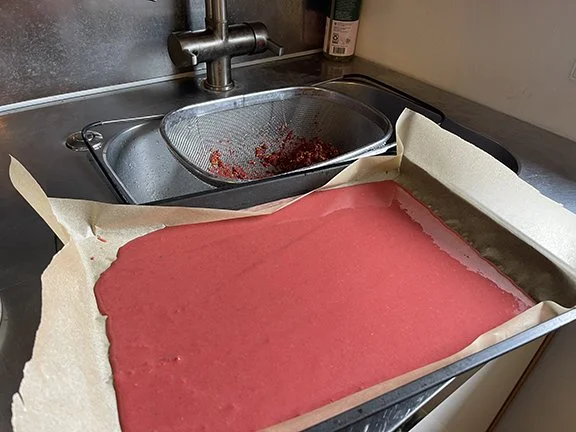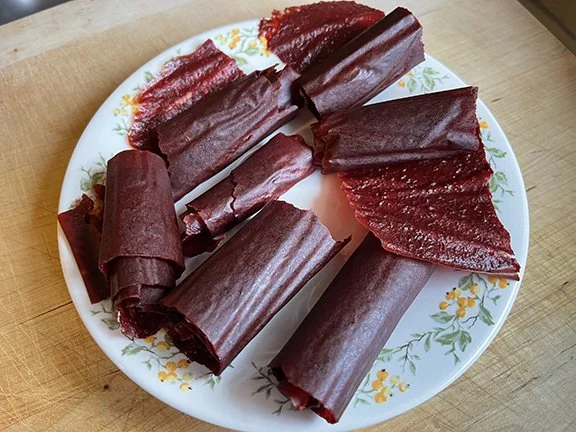Discovering the Fruit Roll-Up Tree: The Enigmatic Autumn Olive
Welcome, nature enthusiasts and curious minds! Today, we delve deep into the world of a unique and intriguing plant, the Autumn Olive, dubbed the “Fruit Roll-Up Tree” due to its delightful berries that can be transformed into tasty fruit roll-ups. So, let’s embark on this journey to uncover the secrets of this wild edible plant!
Introduction to Autumn Olive
Autumn Olive, scientifically known as Elaeagnus umbellata, is a member of the Oleaster family (Elaeagnaceae) and is native to Asia. It’s also known by several other names, including Autumnberry and Japanese Silverberry.
A stand of Autumn Olive bushes growing along the roadway in Central Indiana.
Habitat and Appearance
This plant thrives in sunny forest edges, meadows, roadsides, and other dry disturbed areas. It’s a dense, branchy shrub, growing up to 20+ feet tall and often as wide as it is tall, with grey to brown smooth bark on younger branches.
Autumn Olive leaves and berries.
Unique Identifying Features
Leaves: Ovate-shaped with scattered silver speckles on top, giving the plant a silvery appearance.
Flowers: Small, 1-inch-long cream-colored, trumpet-shaped flowers growing in clusters from the base of the leaves.
Fruits: Small red fruits that ripen in fall, covered in silver speckles.
Notice the Silver Specs on these Autumn Olive berries.
Creek’s Commentary
Introduced in the 19th century from Asia to help control erosion, Autumn Olive is now considered an invasive shrub in some states, such as New York and Connecticut. However, it is not only strikingly beautiful but also the source of one of the most underrated fruits in the Eastern USA.
Harvesting and Culinary Uses
The berries of Autumn Olive are the perfect combination of sweet and tart and can be enjoyed in various ways:
Raw: Enjoyed seed and all.
Pureed: Transformed into fruit leather after straining out the seeds.
Mixed: Incorporated into various sauces and chutneys.
Simmering Autumn Olive Berries to soften.
Recipe: Autumn Olive Fruit Leather
Ingredients:
4 Cups Autumn Olive Puree
1 Teaspoon Honey
Instructions:
Boil the Autumn Olives in a little water and mash as they soften to press out the seeds.
Strain the mixture and press with a wooden spoon to get rid of the seeds.
Add honey to the puree to sweeten it and make it more flexible.
Pour the puree on parchment paper on a baking sheet and place it in the oven at the lowest temperature with the door cracked until you can peel the puree from the parchment paper like a sheet.
Cut into strips and enjoy!
Autumn Olive pulp after straining seeds.
Autumn Olive Fruit Roll Ups
Warnings and Considerations
While Autumn Olive offers delightful fruits, it’s crucial to be cautious and well-informed. Several bushes produce small red berries in the fall, some of which are not edible. Always consult with a qualified expert or botanist for plant identification and ensure that you are not allergic to or intolerant of any wild plant before consumption.
Conclusion
The Autumn Olive, or the “Fruit Roll-Up Tree,” is a fascinating plant with its unique features and delightful fruits. It invites us to explore, learn, and taste the wonders of nature while being mindful and respectful of the environment.
Learn More
For a comprehensive guide on identifying, harvesting, and enjoying Autumn Olive, explore our full-color downloadable identification sheet set available here.

